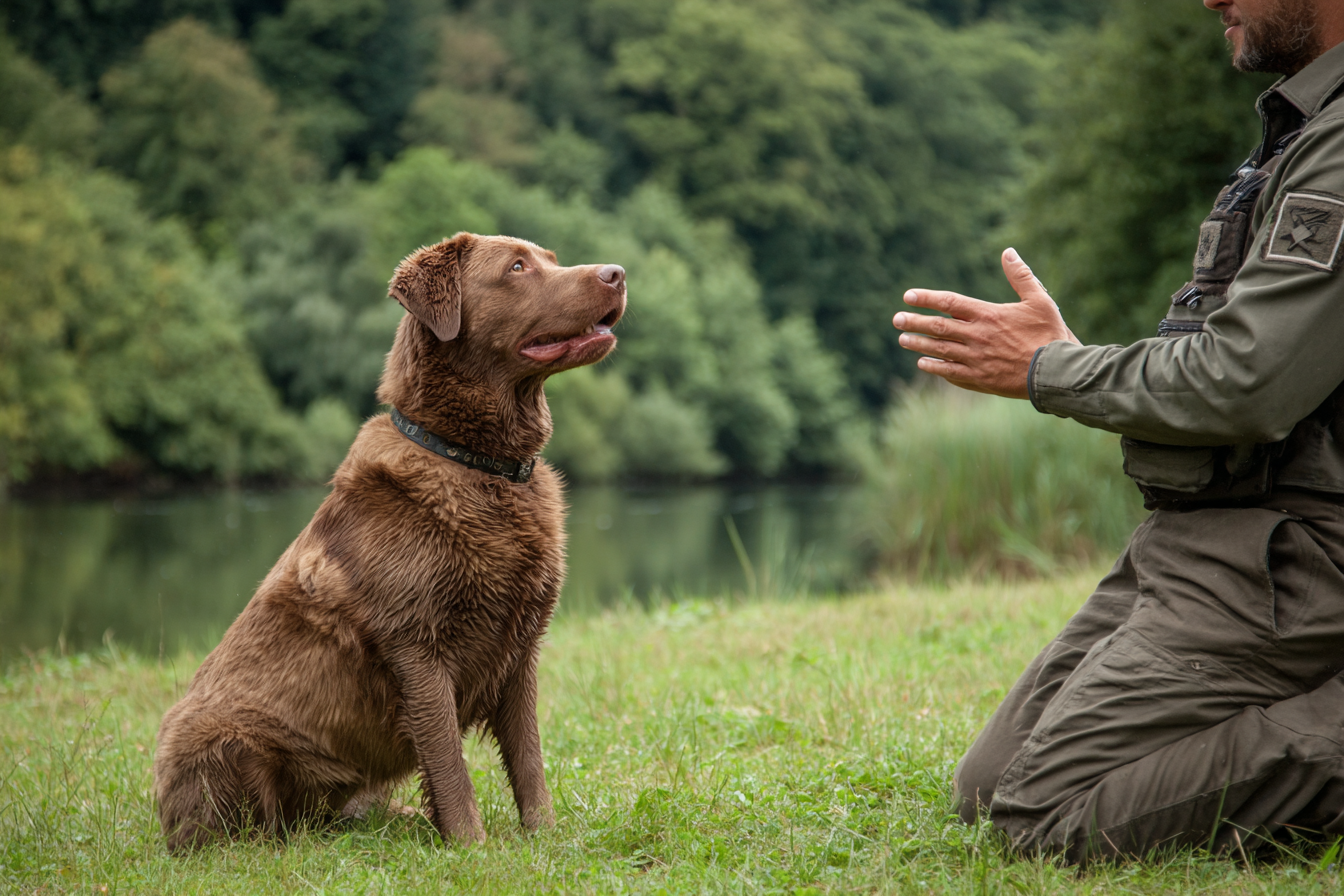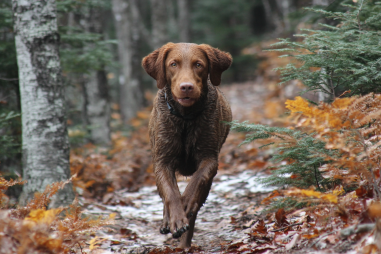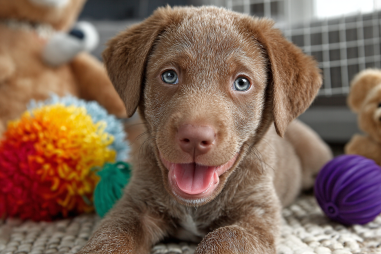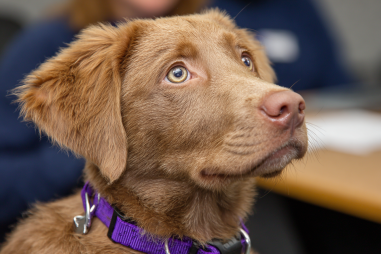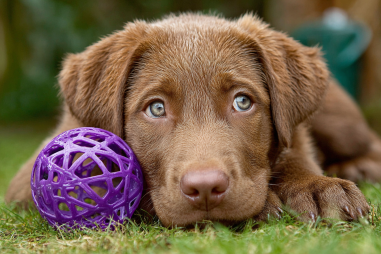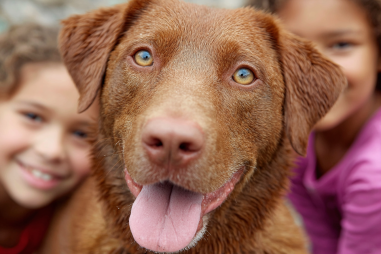The Chesapeake Bay Retriever is a spirited and intelligent breed known for its loyalty and versatility. However, training this energetic dog can sometimes be a challenge due to their strong-willed nature. Whether you’re a first-time owner or an experienced dog enthusiast, understanding effective Chesapeake Bay Retriever training techniques is essential. These approaches not only teach your dog well-mannered behavior but also deepen the connection between you and your furry companion. Let’s explore tailored methods to bring out the best in your Chesapeake Bay Retriever.
Understanding the Breed’s Learning Style
Chesapeake Bay Retrievers are exceptionally smart, with a natural instinct for problem-solving and independent thinking. This intelligence means they grasp commands quickly but also possess a stubborn streak that can make training challenging if not approached correctly. They were originally bred for retrieving in tough water conditions, requiring both physical strength and mental resilience. Therefore, they learn best through hands-on activities that engage their minds and bodies simultaneously.
Unlike some breeds that respond well to repetitive drills alone, Chesapeake Bay Retrievers often thrive when training sessions are varied and stimulating. They enjoy working for rewards and appreciate tasks that challenge their hunting and retrieving instincts. Understanding this balance between intelligence and independence is crucial for setting realistic training expectations and ensuring consistent progress.
Positive Reinforcement Methods
Positive reinforcement is one of the most effective techniques for training Chesapeake Bay Retrievers. This method involves rewarding your dog when they perform a desired behavior, which motivates them to repeat that behavior in the future. Rewards can come in many forms, including treats, verbal praise, toys, or extra playtime.
Positive reinforcement creates a trust-based relationship between you and your dog, encouraging cooperation without intimidation. Since Chesapeake Bay Retrievers can be sensitive, harsh corrections can backfire and provoke resistance or anxiety. Instead, reward-based training encourages enthusiasm and eagerness to learn.
To begin positive reinforcement training:
- Identify what motivates your dog most—whether it’s food, toys, or affection.
- Immediately reward your dog when they follow a command correctly.
- Use a consistent marker, such as a clicker or a verbal “Yes!” to indicate the exact moment the desired behavior occurs.
Over time, your dog will associate commands with positive outcomes, making training sessions productive and enjoyable.
Basic Obedience Commands
Starting with basic obedience commands is essential for every Chesapeake Bay Retriever. These commands form the foundation for good behavior and provide clear communication between you and your dog. Important commands to focus on include:
- Sit: A fundamental command to help your dog settle and focus.
- Stay: Crucial for safety, teaching your dog to hold position until released.
- Come: Vital for recall and control during off-leash activities.
- Down: Encourages calm behavior and submission on cue.
- Leave it: Helps keep your dog safe by ignoring distractions or dangerous items.
For Chesapeake Bay Retrievers, consistency in training sessions matters. Short, frequent sessions work best to maintain their interest without overwhelming them. Incorporating these commands into daily routines, such as meal times and walks, reinforces their importance and normalizes good behavior.
Crate and Leash Training
Crate training provides your Chesapeake Bay Retriever with a secure space that can help reduce anxiety and prevent destructive behavior when you’re not home. Start by introducing the crate as a positive environment—never as a punishment. Gradually increase the time your dog spends in the crate, rewarding calm behavior inside and offering toys or treats to encourage comfort.
Leash training is equally important, especially since Chesapeake Bay Retrievers are strong and energetic dogs. Proper leash manners prevent pulling and jumping, making outings safer and more enjoyable for both of you. Techniques for effective leash training include:
- Using a well-fitted harness or collar for control.
- Stopping or changing direction when the dog pulls, teaching that pulling doesn’t get them where they want to go.
- Rewarding loose-leash walking with treats and praise.
- Keeping walks interesting but controlled to stimulate your dog while reinforcing good behavior.
Consistent crate and leash training help build a routine that your Chesapeake Bay Retriever understands, decreasing stress for both owner and dog.
Addressing Common Behavioral Challenges
Chesapeake Bay Retrievers can sometimes exhibit behaviors like stubbornness, separation anxiety, or excessive barking. Early intervention and appropriate training strategies can manage or prevent these issues.
- Stubbornness: This breed’s independent streak means they may ignore commands if bored or distracted. Keep training engaging and use high-value rewards to maintain focus.
- Separation Anxiety: Gradually acclimate your dog to alone time by leaving for short periods and returning calmly. Providing toys and crate training can help them feel secure.
- Excessive Barking: Identify the triggers, whether it’s boredom, alertness, or excitement. Redirect barking behavior with commands like “quiet” and reward silence.
- Jumping Up: Teach polite greetings by turning away and ignoring your dog when they jump, rewarding calm behavior instead.
Patience and consistency in addressing these behaviors reflect your dog’s need for structure and clear communication.
Advanced Training Ideas
Once your Chesapeake Bay Retriever masters the basics, you can explore advanced training to keep them mentally and physically stimulated. These dogs excel in activities such as agility, obedience competitions, retrieving games, and even search and rescue training due to their athleticism and intelligence.
Some advanced training ideas include:
- Agility Training: Setting up obstacle courses to challenge your dog’s coordination and agility.
- Retrieve and Fetch Variations: Teaching complex retrieving commands or adding distance and direction components.
- Trick Training: Encouraging fun tricks like rolling over, playing dead, or weaving through your legs.
- Scent Work: Engaging their natural nose skills with scent detection games and exercises.
Involving your Chesapeake Bay Retriever in activities that tap into innate instincts provides healthy outlets for energy and builds confidence.
Consistency and Patience Tips
Training any dog requires time, patience, and consistency, but it is especially true for Chesapeake Bay Retrievers. Because they can be strong-willed, maintaining a calm and firm approach without frustration is key.
- Be consistent: Use the same commands, cues, and routines so your dog knows what to expect.
- Keep sessions short and upbeat: Avoid long, tiring sessions that can cause boredom or resistance.
- Practice regularly: Frequent and varied training reinforces lessons and deepens understanding.
- Stay patient: Remember that every dog learns at their own pace, and setbacks are a normal part of the process.
- Celebrate progress: Recognize small victories to stay motivated and strengthen your bond.
Consistency paired with positive reinforcement fosters an environment where your Chesapeake Bay Retriever feels safe, confident, and eager to learn.
Building a Lifelong Partnership
Training your Chesapeake Bay Retriever is more than just teaching commands—it’s about nurturing a meaningful relationship. With their intelligence and independent spirit, they thrive when challenged and loved in equal measure. By using positive reinforcement, understanding their learning style, and being patient and consistent, you’ll raise a happy, well-behaved companion capable of great achievements both in and out of the home. Embrace every training stage as an opportunity to grow your bond and enjoy the rewarding partnership that this unique breed offers.

